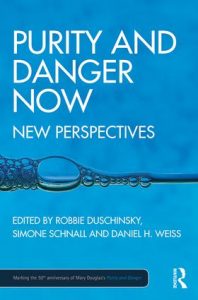Julian Jara-Ettinger, Hyowon Gweon, Laura E. Schulz, and Joshua B. Tenenbaum, ‘Computational Principles Underlying Commonsense Psychology’, Trends in Cognitive Sciences, 20 (2016), 589-604.
This is all about the ‘naive utility calculus’. The idea is that from a young age our social thinking is based on an assumption that everyone is just trying to maximise rewards and minimise costs. This simple belief underlies our observations of others, our inferences of their aims, our assessments of their capabilities and qualities, and so on. Jara-Ettinger et al. see this as an explanation of the ‘rich social reasoning’ (it’s ‘surprisingly sophisticated’) that even tiny young humans seem to undertake. The framework is Bayesian, and I am glad now that I wrote a post summarising what this adjective carries with it: see here. The calculus is based on the development of hypotheses according to new evidence, but its basic shape is consistent.
Another way of putting this ‘calculus’ is a ‘common-sense theory of psychology’, but that doesn’t suggest the underlying mathematical quality to the modelling involved. Indeed, there is some heavy duty mathematics here, but I am not going to get into that. (I have my own naive kinds of calculus…) There are parallels in earlier psychological research, but now, they argue, we can apply ‘new computational cognitive modeling tools’. There are parallels in social and economic theory too, but the point here is ‘not a scientific account of how people act’, but ‘a scientific account of people’s intuitive theory of how people act’. Indeed, this theory might be quite wrong in numerous complex situations, and may make us surprised by things we shouldn’t be surprised by, but the basic toolkit is the basic toolkit, fitted for everyday use, handling standard demands effectively.
Much of the article is spent outlining the ways in which a naïve calculus works, and the things it might miss. Jara-Ettinger et al. are interested in the ways in which the costs / rewards calculation can involve an ‘agent-invariate structure’, wherein the characteristics of the individual are ignored and the absolute value of costs and rewards takes precedence. Overall they wonder how the simplifications that result from common-sense psychology can be understood better, because they may tell us a lot about ourselves.
*
One novel sprang to mind when I was thinking about this. It related to this calculus in a double negative way, because it represented a central character whose actions were hard to fathom, failing to understand those around him. This was John Williams’s Stoner (1965), which had a revival in 2013, when everyone seemed to be reading it. It’s the story of an English literature academic, so my perception of ‘everyone’ was particular, and inflated. I was one of its , but not because I thought people would thereby Finally Understand Me (I very much hope not). It was because it built towards a series of moving moments in which Professor Stoner encountered the awful opacity of other people (especially his daughter), and I really liked the way that it allowed this to be a failure on his part, and also the essential condition of life, and a sort of experiment in fiction as well. By saying little about what Stoner thinks other people are thinking, it leaves us to infer the particular naivety of his understanding of others, which ends up, for him and for us, as a kind of despair.
The portrait of Stoner was convincing, but that does not mean it was realistic, exactly, and I don’t think it needs to be realistic to be valuable. In fact it was frustrating to read how inconsistent his sensitivity (to people and poems) could be, and he seemed uniquely and impossibly broken in his own way. Williams has an unflinching style of telling the story that provides a direct encounter. However, we don’t get inside Stoner’s head much more than we get inside other people’s heads in everyday life. Equations like those produced by Jara-Ettinger et al. don’t deliver the particulars of how any mental calculus works in practice. A novel like Stoner can give us a version that might be just as instructive by seeming false as by seeming true, because it asks us to check its hypotheses against our working theories, and thereby to enrich our thinking about what those working theories are, and what’s good and bad about them.
